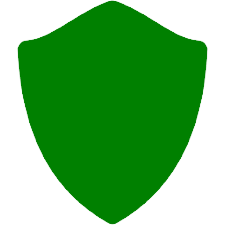Python is Dynamic Programming Language, Founded By Python Software Foundation.Python is a programming language that has seen widespread adoption since its inception by Guido van Rossum in 1991. This interpreted, high-level, and general-purpose language serves a multitude of applications, encompassing web development, scientific computing, data analysis, and artificial intelligence. Python stands out for its simplicity and readability in terms of syntax, making it a preferred choice among developers. Its versatility and user-friendliness have contributed to its rapid growth, fostering a vibrant global community of developers and users. One of Python's standout advantages is its remarkable simplicity and ease of use. With an extensive library ecosystem and numerous modules, Python allows complex tasks to be executed with just a few lines of code. The language's readability is also a noteworthy feature, as it enhances the ease with which others can comprehend your code. Furthermore, Python boasts a robust developer community that consistently collaborates on innovative projects and openly shares their code, ensuring readily accessible assistance and information when needed. Another pivotal aspect of Python is its versatility, accommodating a broad spectrum of tasks, from basic scripts to intricate web applications. It is equally proficient in data analysis and scientific computing, thanks to its specialized libraries for numerical computation and data visualization. Additionally, Python plays a prominent role in the field of machine learning, facilitating tasks such as image recognition, natural language processing, and predictive modeling. At the heart of Python's scientific computing capabilities is NumPy, an indispensable library that supports numerical operations. NumPy is indispensable for scientific and engineering applications, as it furnishes functions for array manipulation, matrix operations, and mathematical computations, including linear algebra, optimization, and random number generation. Matplotlib, another pivotal library, empowers Python with data visualization capabilities. It streamlines the creation of diverse plots and charts, including line graphs, scatter plots, histograms, and bar charts. Matplotlib's customization options enable users to tailor the appearance of their visualizations and incorporate labels and annotations. For data analysis tasks, the Pandas library is a workhorse in Python. Pandas facilitate the handling of structured data, such as tables and time series, offering tools for data filtering, grouping, aggregation, cleaning, and transformation. Its seamless integration with other libraries like NumPy and Matplotlib further enhances its utility in data analysis workflows. Python's built-in functions and data types simplify common programming tasks. Built-in support for lists, dictionaries, and sets streamlines the management of data collections, while functions for string manipulation and date/time operations simplify text processing and time-related calculations. Python's dynamic typing system allows variable types to change at runtime, offering flexibility when dealing with different data types. This feature, combined with Python's support for object-oriented programming, enables the creation of classes and objects to organize code into reusable components. Python's platform-agnostic nature ensures compatibility with various operating systems, including Windows, MacOS, and Linux, making it an excellent choice for cross-platform development. Additionally, Python accommodates a range of programming paradigms, from functional and procedural to object-oriented, granting developers the flexibility to choose the best approach for their projects. In conclusion, Python stands as a versatile, powerful, and user-friendly programming language, suitable for a wide array of tasks, from basic scripts to complex applications and scientific computations. Its extensive library ecosystem and support for object-oriented programming make it an attractive option for diverse projects. However, it's worth considering Python's performance and concurrent programming limitations when selecting it for specific tasks. All in all, Python is an invaluable tool in the toolkit of any programmer. Python is a high-level, interpreted programming language that has gained immense popularity in recent years. Here are some of the useful features and benefits of Python: Simple and Easy to Learn: Python has a simple and easy-to-understand syntax that makes it easy for beginners to learn and write code quickly. Cross-platform Compatibility: Python is a cross-platform language that runs on Windows, Linux, and macOS. This makes it easy to write and execute code on any operating system. Large Standard Library: Python has a large standard library that provides built-in functions and modules for common tasks, such as file handling, regular expressions, networking, and more. Third-party Libraries: Python has a vast collection of third-party libraries that can be easily installed using the pip package manager. These libraries provide additional functionality and make it easy to perform complex tasks. Dynamic Typing: Python is dynamically typed, meaning you don't need to declare the data type of a variable before using it. This makes it easy to write code quickly and reduces the amount of code you need to write. Object-oriented Programming: Python supports object-oriented programming (OOP), which allows you to write code that is organized into reusable objects. Interpreted Language: Python is an interpreted language, meaning you don't need to compile your code before running it. This makes the development process faster and more efficient. High-level Language: Python is a high-level language that abstracts away many low-level details, making it easier to write code quickly. Web Development: Python has several web frameworks, including Django and Flask, that make it easy to develop web applications. Data Science: Python has become the go-to language for data science and machine learning due to its simplicity, extensive libraries, and easy integration with other tools and technologies. Overall, Python's simplicity, ease of use, and extensive libraries make it a versatile language that can be used for a wide range of applications, from web development to data science and beyond. 
System Requirements:
(Windows Version 64-bit)
Date Added:16-Feb-2024 License:Free Developer By:Pythonhttps://www.python.org |
Relative Softwares |
|---|









